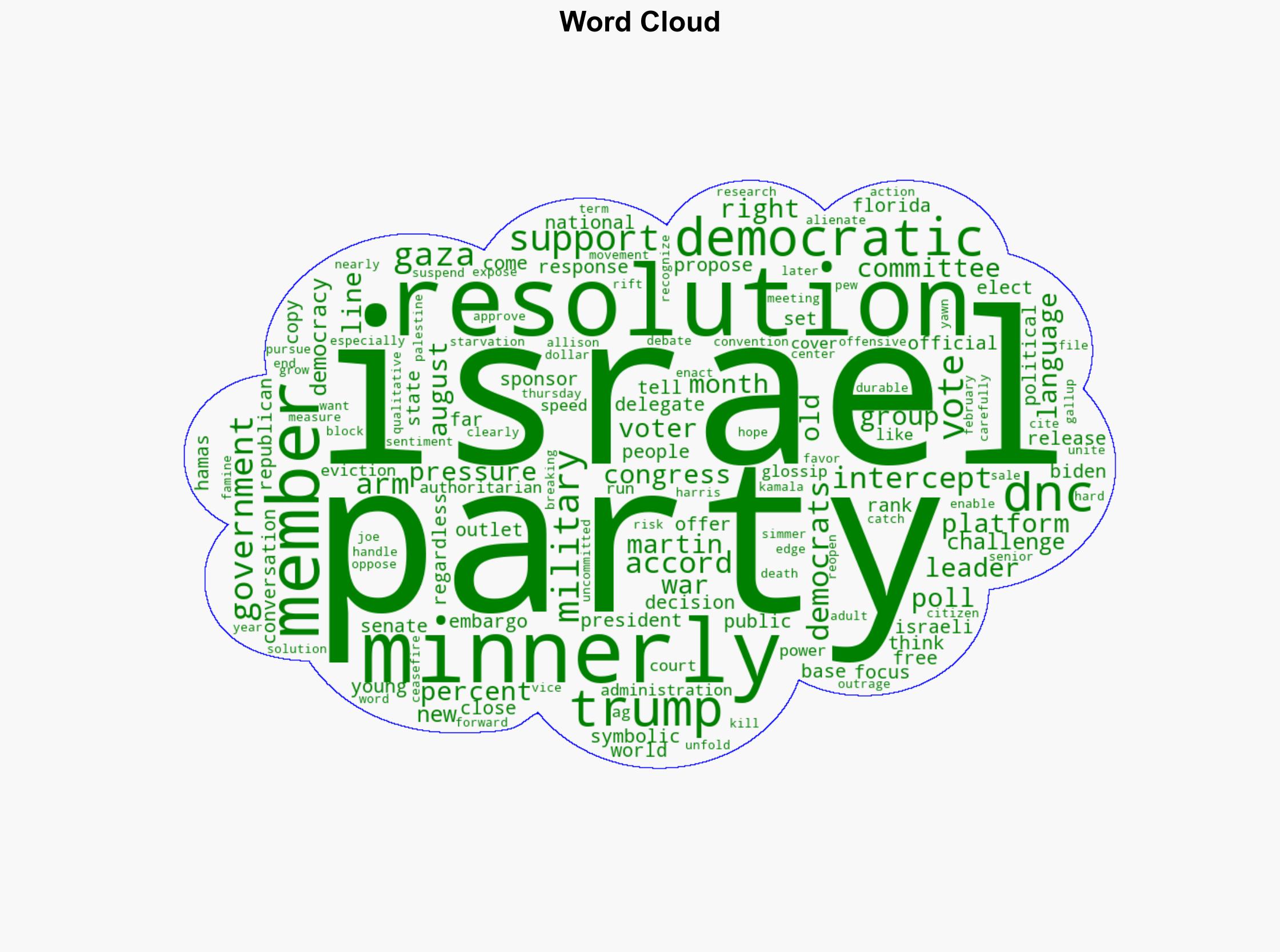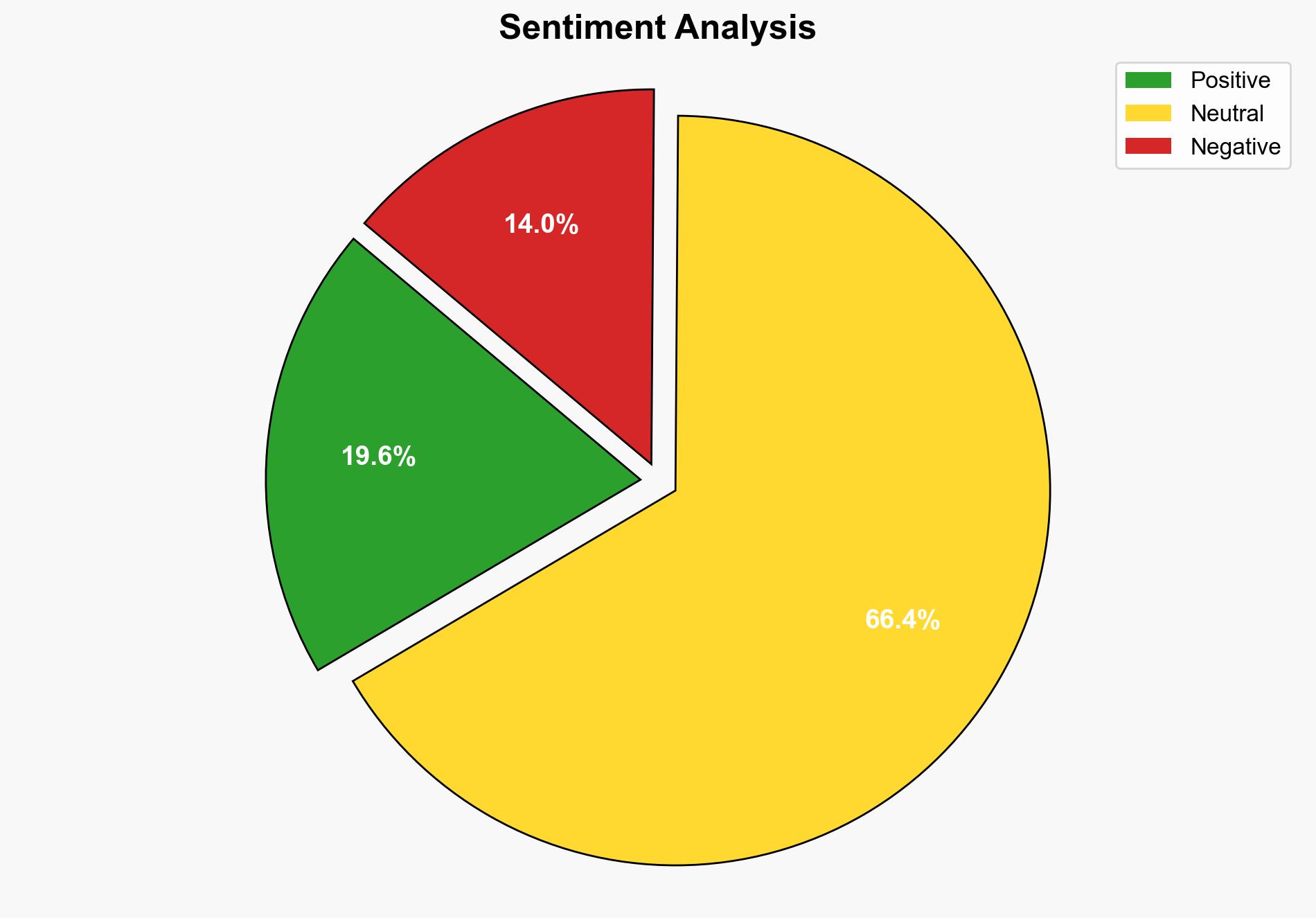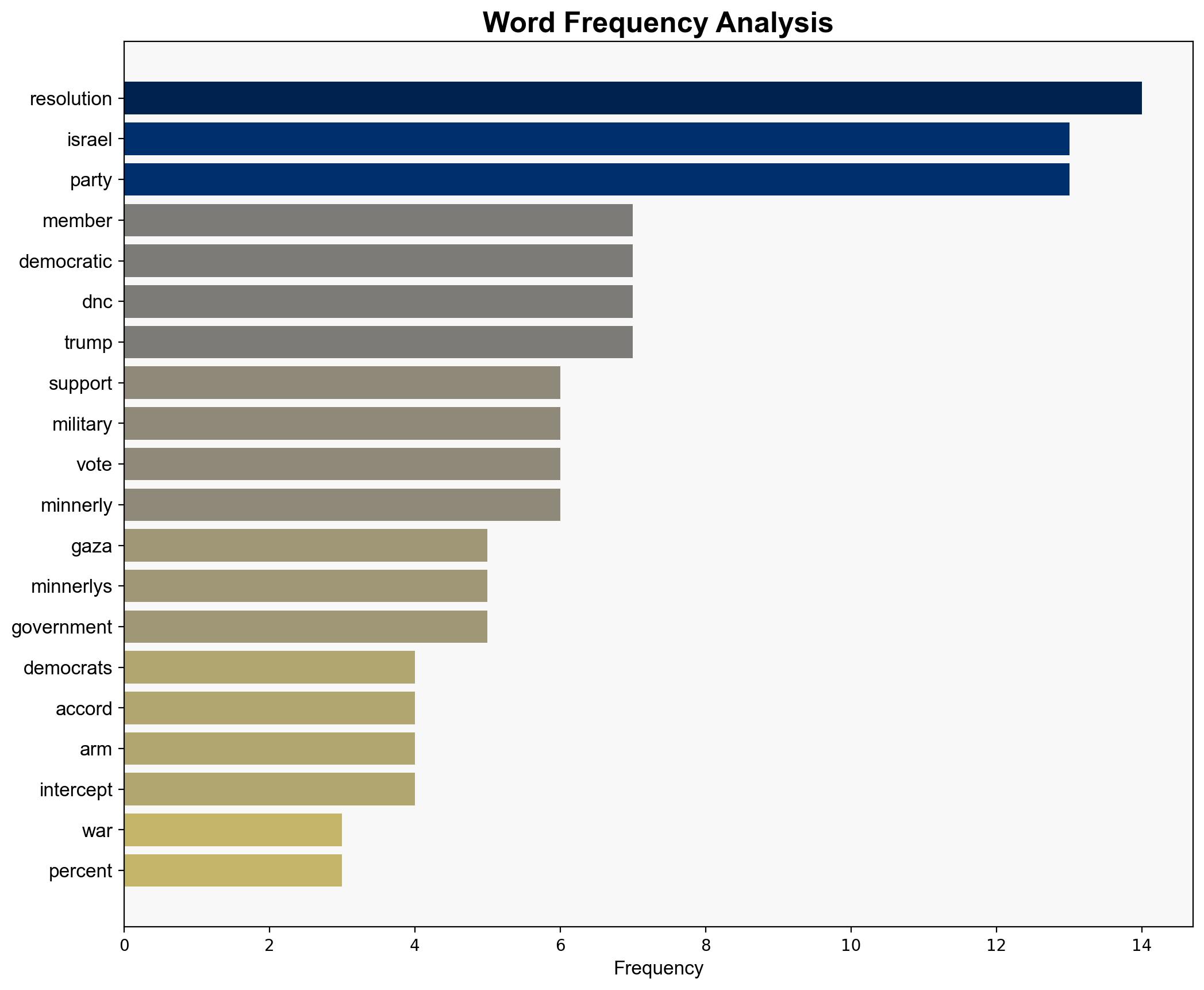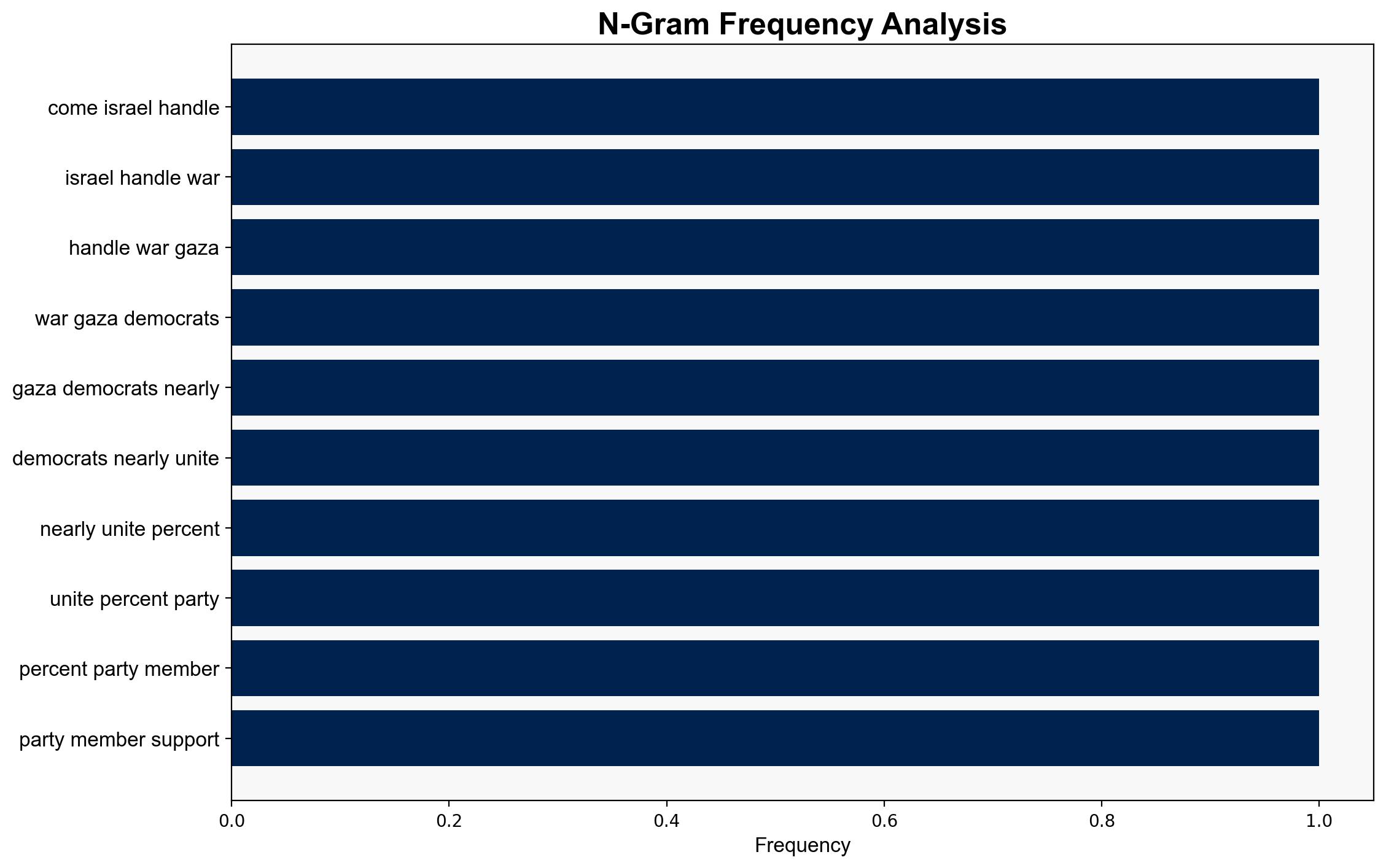DNC Leadership Pressured Gen Z Member to Kill Resolution on Banning Arms to Israel – The Intercept
Published on: 2025-08-15
Intelligence Report: DNC Leadership Pressured Gen Z Member to Kill Resolution on Banning Arms to Israel – The Intercept
1. BLUF (Bottom Line Up Front)
The Democratic National Committee (DNC) leadership’s pressure on a Gen Z member to withdraw a resolution on banning arms to Israel reflects internal party tensions over U.S. foreign policy. The most supported hypothesis is that the DNC leadership aims to maintain party unity and avoid alienating key electoral demographics. Confidence level: Moderate. Recommended action: Monitor intra-party dynamics and public opinion shifts to anticipate potential policy changes or electoral impacts.
2. Competing Hypotheses
1. **Hypothesis A**: The DNC leadership pressured the Gen Z member to withdraw the resolution to maintain party unity and avoid alienating pro-Israel voters and donors.
– **Supporting Evidence**: The DNC leadership’s actions align with the party platform that supports Israel’s military edge. The leadership’s concern about intra-party divisions and potential electoral repercussions is evident.
2. **Hypothesis B**: The DNC leadership’s actions were primarily driven by external political pressures, such as avoiding giving Republicans a political advantage or emboldening Israel’s adversaries.
– **Supporting Evidence**: Concerns about the resolution being a “gift to Republicans” and the potential to embolden Israel’s adversaries suggest external political considerations.
Using the Analysis of Competing Hypotheses (ACH) method, Hypothesis A is better supported due to the alignment with internal party dynamics and historical precedence of prioritizing electoral considerations.
3. Key Assumptions and Red Flags
– **Assumptions**: It is assumed that the DNC leadership’s primary motivation is electoral strategy rather than ideological alignment. Another assumption is that the resolution’s withdrawal would significantly impact voter behavior.
– **Red Flags**: The lack of direct statements from DNC leadership raises questions about the transparency of their motivations. The absence of detailed polling data on the specific impact of the resolution on voter sentiment is a blind spot.
4. Implications and Strategic Risks
The internal division within the Democratic Party could lead to a loss of support among younger voters, potentially affecting future elections. If the party fails to address these ideological rifts, it risks long-term fragmentation. Additionally, the resolution’s withdrawal may embolden critics who perceive the party as inconsistent on human rights issues, impacting its global standing.
5. Recommendations and Outlook
- Engage in dialogue with diverse party factions to address concerns and unify the party on foreign policy issues.
- Monitor public opinion trends and adjust messaging to mitigate potential electoral impacts.
- Scenario Projections:
- Best: The party successfully navigates internal divisions, maintaining electoral strength.
- Worst: Continued internal conflict leads to significant electoral losses and weakened party cohesion.
- Most Likely: The party experiences moderate internal tensions but manages to retain key voter demographics.
6. Key Individuals and Entities
– Allison Minnerly
– Ken Martin
– Brian Romick
– Matt Duss
7. Thematic Tags
national security threats, geopolitical strategy, electoral dynamics, U.S. foreign policy





